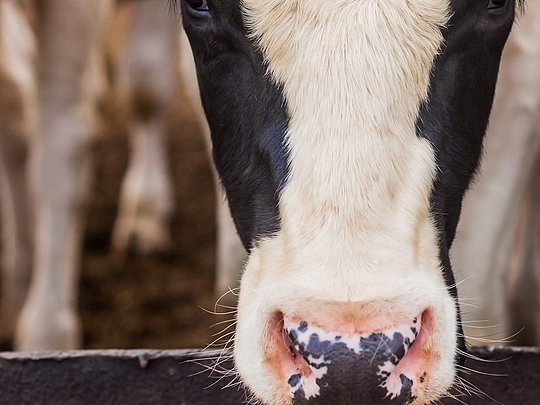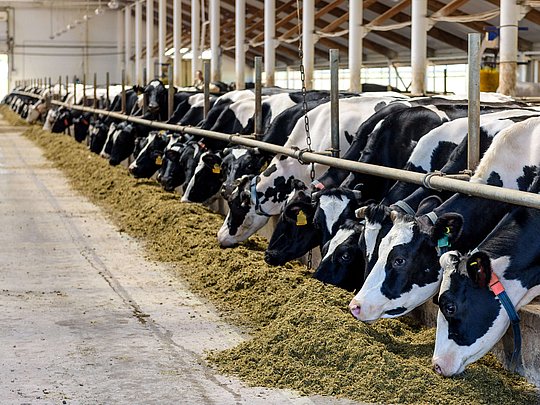Understanding heat stress in dairy to alleviate it
Due to climate change and the selection of high-producing animals, dairy cows are more confronted with high temperatures while getting more sensitive to heat stress (HS), compromising their performance. The most common indicator to estimate the magnitude of HS is called Temperature Humidity Index (THI). Here is an insight on HS origin, its consequences, and mitigation strategies.
Core body temperature

Cattle maintain a relatively constant core body temperature (CBT) over a wide range of weather. The CBT is a result of heat production and losses. In normal conditions, there are several sources of heat production by cows: basal metabolism, physical activity, rumination and digestion, and production metabolism.
HS is observed when cows cannot maintain their CBT, leading to the rising of CBT and the impairment of metabolic functions. High-producing cows are more sensitive to HS than low-producers, as they require a higher metabolism, creating more heat. For example, cows producing 35L/day tolerate threshold temperatures for HS 5°C higher than cows producing 45L/day.
Observing heat stress in dairy
Recognizing the signs of HS is the first step to implementing practical mitigation strategies. When suffering from HS, cows change their behavior to reduce the amount of heat produced or increase heat dissipation.
Mechanisms such as increased respiration rate (RR) and panting, open-mouth breathing, reduced feed intake (FI) and rumination time, reduced activity and lying time, and seeking shade and water… can then be detected.
Effect on heat stress in dairy cows

Ruminal acidosis is closely related to HS as the FI behavior of the cows is switched toward fewer but bigger meals, while rumination time decreases, and bicarbonate is redirected to the bloodstream, all leading to an acidification of the rumen.
Along with rumen acidosis, some metabolic-related diseases appear, such as gut lesions, lameness & laminitis due to massive endotoxins (LPS) production, oxidative stress (OS), and inflammation.
All these physiological adaptations and responses to HS-related challenges can have long-lasting effects on the cows and directly affect the economic performance of the dairy operation (e.g. reduced milk production, health issues, decreased conception rate, increased SCC, smaller and weaker calf…).
Preventing heat stress
There are several ways to reduce the severity of HS, like adapting the barn, managing the animals, and adjusting the diet. In addition to certain diet alterations, studies have shown that feed additives can potentially help minimize the effects of HS and maintain milk production in dairy cows subjected to HS as measured through parameters such as milk output and milk urea nitrogen.
If we've made you curious and you'd like to read the full article about phytogenics and their potential supporting effects on alleviating heat stress in dairy cattle, published in the Feed & Additive magazine, please click below.

Delphine Lacombe
Delphine Lacombe has joined Delacon in April 2018, as Customer Technical Manager for the ruminant team. She is an agronomist engineer, graduated from Agrocampus Ouest in France, and started working as dairy nutritionist for a feedmill. For the past 10 years, Delphine has been working within animal nutrition industry, mainly in the feed additive business. At the moment, she is responsible for the technical support of the EE and Latam regions.










